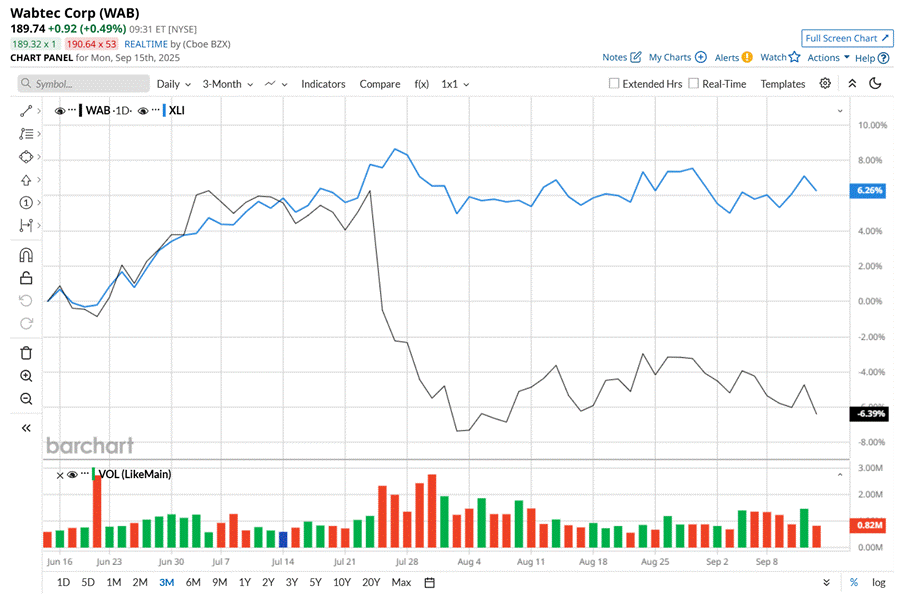/Westinghouse%20Air%20Brake%20Technologies%20Corp%20logo%20and%20website-by%20Wirestock%20Creators%20via%20Shutterstock.jpg)
Pittsburgh, Pennsylvania-based Westinghouse Air Brake Technologies Corporation (WAB) provides technology-based locomotives, equipment, systems, and services for the freight rail and passenger transit industries. Valued at a market cap of $32.3 billion, the company’s offerings range from control systems, analytics, and asset performance management to braking systems, HVAC, signaling equipment, and remote train and locomotive controls, helping enhance efficiency, safety, and sustainability across global rail networks.
Companies worth $10 billion or more are typically classified as “large-cap stocks,” and WAB fits the label perfectly, with its market cap exceeding this threshold, underscoring its size, influence, and dominance within the railroads industry. The company is recognised as a global leader in rail technology, combining over 150 years of expertise with modern innovation. It leverages its scale, diverse product portfolio, and global reach to provide mission-critical equipment and services that keep rail networks running reliably while driving the industry’s transition toward cleaner and smarter transportation.
Despite its notable strength, this railroad company has dipped 12.6% from its 52-week high of $216.10, reached on Jul. 8. Moreover, shares of WAB have declined 7.4% over the past three months, lagging behind the Industrial Select Sector SPDR Fund’s (XLI) 6.6% return during the same time frame.

On a YTD basis, shares of WAB are down marginally, underperforming XLI’s 15.4% rise. Moreover, in the longer term, WAB has gained 12.6% over the past 52 weeks, compared to XLI's 16.5% uptick over the same time period.
To confirm its bearish trend, WAB has been trading below its 200-day and 50-day moving averages since late July, with minor fluctuations.

On Jul. 24, shares of WAB plunged 6.4% after its mixed Q2 earnings release. On the upside, due to robust adjusted operating margin expansion, the company’s adjusted EPS of $2.27 grew 15.8% from the year-ago quarter and came in 4.1% ahead of the consensus estimates. However, its revenue rose by a modest 2.3% year-over-year to $2.7 billion, falling short of analyst expectations by 2.2%, which weighed on investor sentiment.
WAB has considerably outperformed its rival, Trinity Industries, Inc. (TRN), which declined 8.5% over the past 52 weeks and 19.8% on a YTD basis.
Despite WAB’s recent underperformance, analysts remain moderately optimistic about its prospects. The stock has a consensus rating of "Moderate Buy” from the 12 analysts covering it, and the mean price target of $222.40 suggests a 17.8% premium to its current price levels.
On the date of publication, Neharika Jain did not have (either directly or indirectly) positions in any of the securities mentioned in this article. All information and data in this article is solely for informational purposes. For more information please view the Barchart Disclosure Policy here.






